4.3 Multidimensional derivation
The anomaly detection method introduced in the previous section treats ‘clustered’ points as normal and ‘scattered’ points as anomalous. ‘Clustering’ is often irregular; points are considered ‘clustered’ as long as they are close to each other in the multidimensional space. ‘Clustering’ in certain scenarios, however, exhibits strong regularity, as illustrated in the figure below.
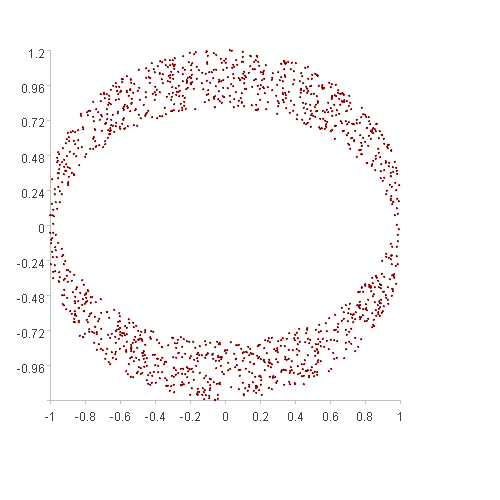
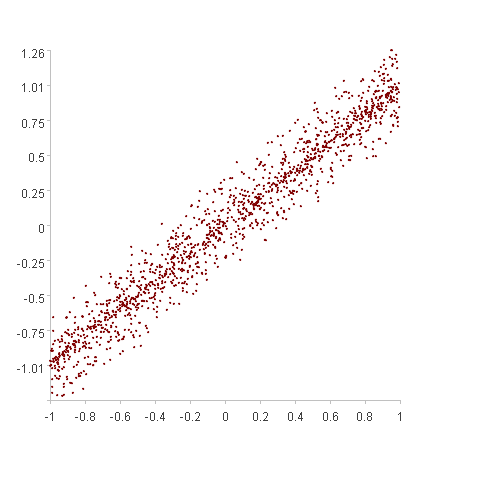
The points in both figures are clustered based on a certain rule, but using the spatial distance method described in the previous section is unlikely to be effective, potentially resulting in many false positives or false negatives.
For such multidimensional time series with recognizable clustering rules, we can compute derived series based on those rules, thereby transforming the problem of multidimensional anomaly detection into a one-dimensional anomaly detection problem on the derived series.
Multidimensional time series X

Using a mathematical transformation Dv(…), a one-dimensional time series D is derived:
D=Dv(X,…)
Perform one-dimensional anomaly detection on D to obtain an anomaly score sequence Od:
Od=Sg(D,…)
Let’s illustrate the derivation method using the most common linearly clustered two-dimensional time series as an example.
Two-dimensional time series X:

Xc1 and Xc2 may be non-linear overall, but within a relatively small interval Xr[-k]i, they are approximately linear. We can perform the derivation as follows:
1. Within Xr[-k]i, the coefficients wi are determined through least-squares fitting.
Let Z=Xr[-k]i

wi=linefit(Zc1,Zc2)
2. Compute the predicted value x’i2 of xi2 using wi and the current point xi1:
x’i2=wi* xi1
3. The difference between the actual xi2 and the predicted x’i2 is the derived value dfi:
dfi=xi2-x’i2
The derived series Df is a set of dfi values, with each dfi value corresponding one-to-one with each Xri value.
Df=[df1,df2,…,dfn]
SPL routine:
| A | B | |
|---|---|---|
| 1 | =file(“linedata1.csv”).import@tci() | /First dimension data |
| 2 | =file(“linedata2.csv”).import@tci() | /Second dimension data |
| 3 | 15 | /Feature interval k |
| 4 | =A1.(~[-A3,-1].(~|1)).to(A3+1,) | /Zc1 |
| 5 | =A2.(~[-A3,-1].([~])).to(A3+1,) | /Zc2 |
| 6 | =A4.(linefit(~,A5(#))) | /wi |
| 7 | =A1.([~1]).to(A3+1,) | /[xi1,1](excluding the first k points) |
| 8 | =A6.(mul(A7(#),~)) | /x‘i2 (excluding the first k points) |
| 9 | =A2.to(A3+1,) | /xi2 (excluding the first k points) |
| 10 | =A9–A8 | /Df |
A6 is the process of computing wi using the least squares method.
A8 is the process of computing the predicted value x‘i2.
Calculation result example:
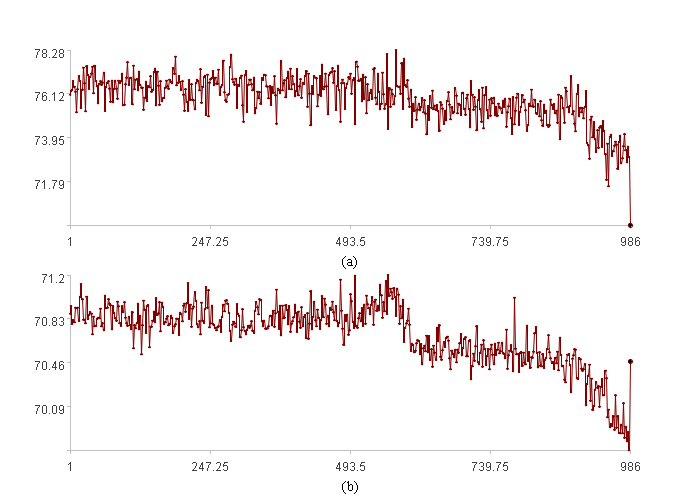
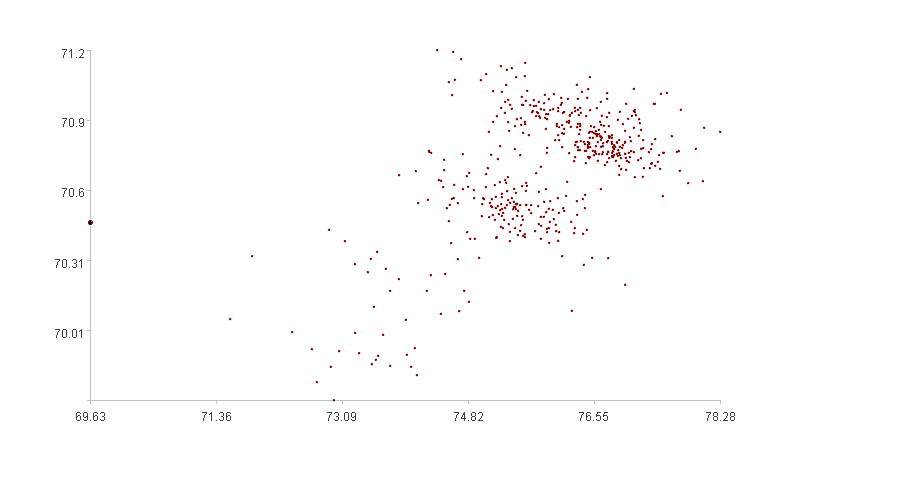
The first figure shows the trend plots of the two-dimensional time series, with the x-axis representing the time series index, the y-axis in (a) representing Xc1, the y-axis in (b) representing Xc2, and the bold points are observation points.
The second figure shows the relationship between the two time series, with the x-axis representing Xc1, the y-axis representing Xc2, and the bold points are observation points.
Observing the second figure, the two series exhibit a linear correlation trend, but the observation points are clearly outside the linearly correlated “cluster” area, and are therefore considered anomalous. Observing the first figure, the curves generally increase or decrease together; however, the observation point exhibits an anomalous behavior: Xc1 decreases while Xc2 increases significantly, which is also considered anomalous.
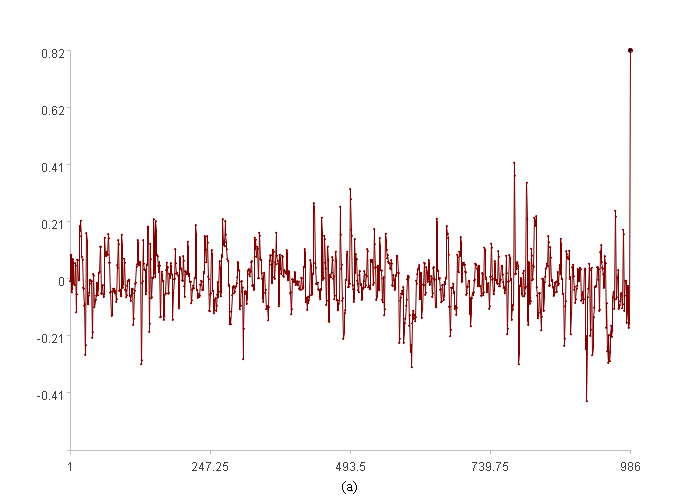
The trend plot of the derived series is shown above. The x-axis represents the time-series index, and the y-axis represents the values of the derived series. The observation points are bolded. Because there are no derived values for the first k points, the derived series contains k fewer points.
Observing the derived series in the figure above, it is found that the observation points exhibit very large derived values. We know that single-dimensional anomaly detection algorithms will identify such extreme values. Looking closer at the figure, all points that are particularly large or particularly small correspond to the anomalous behavior of the original time series.
SPL Official Website 👉 https://www.esproc.com
SPL Feedback and Help 👉 https://www.reddit.com/r/esProcSPL
SPL Learning Material 👉 https://c.esproc.com
SPL Source Code and Package 👉 https://github.com/SPLWare/esProc
Discord 👉 https://discord.gg/sxd59A8F2W
Youtube 👉 https://www.youtube.com/@esProc_SPL


